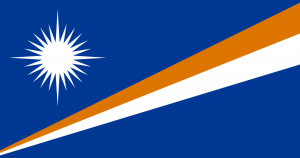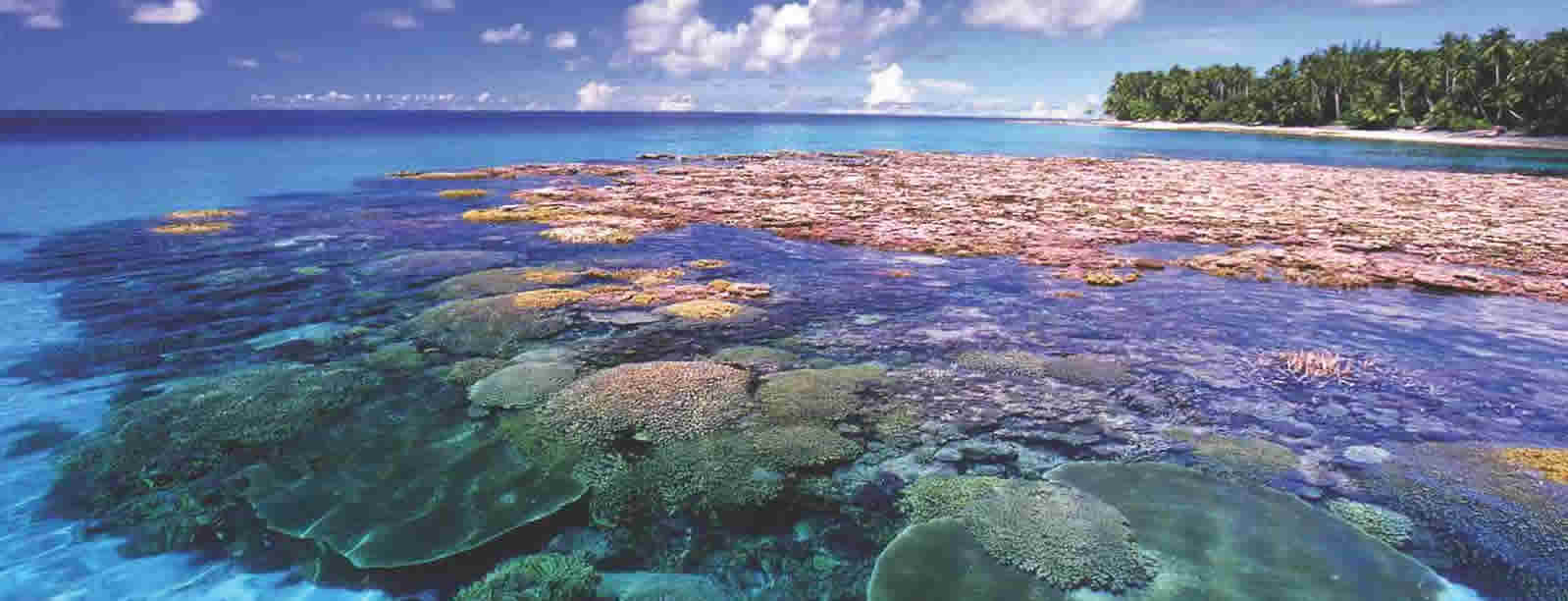Language/Marshallese/Culture/Marshall-Islands-Timeline
< Language | Marshallese | Culture
Jump to navigation
Jump to search
Rate this lesson:
Historical Timeline for Marshall Islands - A chronology of key events
Marshall Islands Timeline[edit | edit source]
The history of the Marshall Islands stretches from the 2nd millennium BC to the present day. Archaeological sources timidly allow us to reconstruct the past of the islands before they entered the fold of the Western powers.
Pre-colonial period[edit | edit source]
- Evidence suggests that around 3,000 years ago, successive waves of immigrants from South Asia spread across the Western Pacific to populate its many small islands. The Marshall Islands were reached by the Micronesians in the 2nd millennium BC. Little is known of the early history of the archipelago. The first settlers traveled between the islands by canoe using wooden nautical charts.
European exploration and colonization[edit | edit source]
A Spanish discovery ...[edit | edit source]
- The Spanish explorer Alonso de Salazar landed there in 1529. The islands were named by Krusenstern after the English explorer John Marshall, who visited them with Thomas Gilbert in 1788, when the two sailors were on their way to Botany Bay in Canton on two ships of the First Fleet (literally the First Fleet, the fleet that paved the way for the colonization of Australia). The Marshall Islands were claimed by Spain in 1874.
... ceded to the Germans[edit | edit source]
- After mediation by the Pope and German compensation of 4.5 million dollars, Spain recognized in 1885 the request of Germany to establish a protectorate on the islands. The new colonial power set up trading posts on the islands of Jaluit and Ebon, where the copra industry flourished. Politically, the Iroij (the great chiefs) continued to rule under German colonial administration.
During the two world wars[edit | edit source]
- At the start of World War I, on October 3, 1914, Japan took control of the Marshall Islands. The Japanese headquarters are located in the same location as the German administration center, Jaluit. The League of Nations ratifies the Japanese installation by giving it a mandate for these islands.
- On January 31, 1944, American forces landed on Kwajalein atoll, the Marines took control of the islands from the Japanese, from February 3, 1944, following intense fighting on Kwajalein and Enewetok atolls.
From one protectorate to another[edit | edit source]
- Flag of the Trust Territory of the Pacific Islands, 1965 - early 1980s In 1947, the United States, as the occupying power, entered into an agreement with the UN Security Council to administer a large part of Micronesia, including the Marshall Islands, under the umbrella of the Trust Territory. of the Pacific Islands.
- From 1946 to 1958, the islands served the atomic purposes of the United States, and were the site of 67 nuclear tests on the various atolls. The world's first hydrogen bomb, codenamed "Mike", was tested on Enewetak Atoll on November 1 (local date) in 1952.
- A significant radar installation is established on Kwajalein Atoll.
March towards independence[edit | edit source]
- On May 1, 1979, due to the changing political status of the Marshall Islands, the United States recognized the constitution of the Marshall Islands and the establishment of the government of the Republic of the Marshall Islands. The Constitution incorporates both American and British constitutional concepts. There were a number of local and national elections when the Republic of the Marshall Islands was founded. Independence became effective on October 21, 1986. Finally, the United States recognized the dissolution of the Trust Territory of the Pacific Islands on December 22, 1990.
Recent history[edit | edit source]
- The Marshalls signed a Free Association Agreement with the United States in 1986. Trusteeship ended by United Nations Security Council Resolution 683 of December 22, 1990.
- Until 1999, the islanders received $ 180 million from the Americans as a rental lease for Kwajalein Atoll, $ 250 million in compensation for nuclear tests, and $ 600 million in other compensation payments.
- Despite the constitution, the government was largely controlled by the Iroij. It was in 1999, following allegations of political corruption, that the aristocratic government was overthrown, with Imata Kabua replaced by the "commoner" Kessai.
- The United Democratic Party, proposing numerous reforms, won the legislative elections of 1999, thus winning the presidency and the cabinet.
Source[edit | edit source]
World Timelines[edit source]
Videos[edit | edit source]
Supporting Marshallese and American Communities in Northwest ...[edit | edit source]
Marshallese Celebrations - YouTube[edit | edit source]


